Introduction
Technische Universität Berlin, abbreviated as TU Berlin, is one of the four comprehensive universities in Berlin, the capital of Germany, and the only comprehensive university of science and engineering in Berlin. It is the first industrial university in Germany, one of the elite universities in Germany, and one of the world's top universities of science and technology.
Overview
Student size: It has about 35,570 students, of which international students account for nearly 27%, making it one of the universities with a high proportion of international students in Germany.
Number of faculty and staff: about 3,120 academic staff and about 2,258 administrative staff.
Campus area: The campus area is approximately 604,000 square meters, with a main campus and multiple branch campuses.
History
The school can be traced back to the Mining College initiated and founded by Frederick II in 1770. The School of Architecture founded in 1799 and the Royal Vocational College in 1821 are also its important sources. In 1879, the three colleges merged to form the Royal Higher Institute of Technology, and began to award doctoral degrees in 1899. In 1916, the school was renamed the Royal Higher Institute of Technology. In 1946, the Prussian Mining Academy was incorporated, and it was reopened in 1946 and adopted its current name, the Technical University of Berlin.
Foundation time
Officially established in 1879, but its origins can be traced back to 1770 and many other predecessor institutions.
School strength
Teaching staff: The school has 351 professors (including 34 junior professors) and 2,588 researchers.
Scientific research achievements: The school has strong scientific research strength, with 10 Nobel Prize winners and 7 Leibniz Prize winners among its alumni and professors. It is in a leading position in many scientific fields, such as the Beetle car developed by the school. .
Discipline advantages: As one of the largest engineering universities in Germany, it has outstanding performance in key professional fields such as engineering and natural sciences. Many of its majors are ranked in the top three in Germany, such as architecture, chemical engineering, electronic and electrical engineering, mechanical and aerospace engineering, etc.
Institutional nature
Public university.
Educational philosophy
Emphasis on placing pure theoretical research and applied research on an equal footing, focusing on cultivating students' practical ability and innovative spirit, and is committed to cultivating high-quality talents with solid professional knowledge and practical skills for the society, so that students can apply what they have learned to practical work and promote the development of science and technology and society.
Key laboratories and disciplines
Key laboratories: It has the largest application chip research center in Germany, and the Electron Microscope Center (ZELMI) provides analytical equipment such as electron grating microscopes and electron radiation detectors for schools and other scientific research institutions.
Key disciplines: Architecture, chemical engineering, electronic and electrical engineering, mechanical and aerospace engineering, mathematics, computer science and information systems, bioengineering, energy science, materials science and other disciplines have a high reputation and influence internationally. The school is also quite prominent in the fields of optics, control, machine tools, engineering design, etc.
Department
The school has 7 There are more than 100 colleges under it, as follows:
College of Humanities: Department of Philosophy, Theory of Science, History of Science and Technology; Department of Literature; Department of History; Department of Sociology, Political History and Education; Department of Education; Department of Language and Communication; Department of Vocational Education and Labor; Center for Women's Studies and Center for Jewish Studies.
College of Mathematics and Natural Sciences: Department of Chemistry, Department of Mathematics and Department of Physics.
College of Process Sciences: Department of Bioengineering, Department of Energy, Department of Food Science, Department of Process Technology, Department of Environmental Protection and Department of Materials.
College of Electronic Engineering and Computer Science: Department of Energy and Automation, Department of High Frequency and Semiconductors, Department of Communications, Department of Microelectronics and Computers, Department of Software Technology and Computer Theory and Department of Economic Information and Quantitative Analysis.
College of Mechanical and Transportation: Department of Fluid Mechanics and Acoustics, Department of Psychology and Labor Science, Department of Land and Marine Transportation, Department of Aeronautics and Astronautics, Department of Precision Machinery and Medical Engineering, Department of Mechanical Manufacturing, and Department of Mechanical Equipment.
School of Architecture, Environment and Planning: It consists of the Department of Architecture, the Department of Civil Engineering, the Department of Applied Geographical Sciences, the Department of Geoinformation and Geodesy, the Department of Landscape Design, the Department of Ecology, the Department of Sociology and the Department of Urban and Regional Planning.
School of Economics and Management: It consists of the Department of Technology and Management, the Department of Enterprise Economics and the Department of National Economy and Economic Law.
Ranking
Ranked 136th in the 2024 THE World University Rankings and 154th in the 2024 QS World University Rankings.
Ranked 35th in the world in the 2016-2017 Times Higher Education World University Rankings for Engineering and Science.
Ranked 60th in the world and 12th in continental Europe in the 2021 QS World University Rankings for Engineering and Technology.
Expenses
German public universities are usually free of tuition, but registration fees and other related fees of about 300 euros per semester may be required.
Campus
Geographic location: The main campus is located in the Charlottenburg district of Berlin. In addition, there are several branch campuses in many places in western Berlin, with very convenient transportation.
Campus facilities: The main building of the school was built in 1884 and designed by Richard Luca. In addition, the school also has service agencies such as the university library, computing center, modern language center, and electron microscope center, providing students and faculty with rich learning and research resources and convenient living conditions.
-
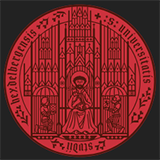
Heidelberg University
-
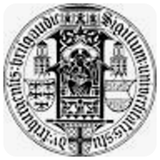
University of Freiburg
-
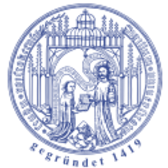
University of Rostock
-
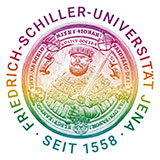
University of Jena
-
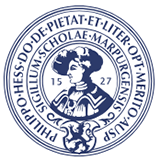
University of Marburg
-
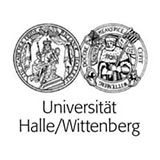
University of Halle-Wittenberg
-
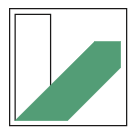
University of Bayreuth
-

Leipzig University
-
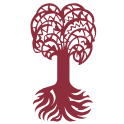
University of Tübingen
-
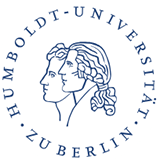
Humboldt University of Berlin
-

Mesoamerican University
-

Istmo University
-

Mariano Galvez University of Guatemala
-

Regional University of Guatemala
-

Galileo University
-

Francisco Marroquín University
-

Rafael Landívar University
-

University of the Valley of Guatemala
-

University of San Carlos of Guatemala
-

Technological Institute of Tlaxcala Plateau
-

Golfo University
-

Technological University of South Sonora
-

Technological University of Huejotzingo
-

Tizimín Institute of Technology
-

Chilpancingo Institute of Technology

